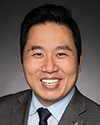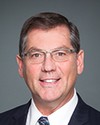Okay.
Through you, Mr. Chair, can you compare and contrast the project under way at Port Hope to that proposed at Chalk River?
Evidence of meeting #97 for Public Accounts in the 42nd Parliament, 1st session. (The original version is on Parliament’s site, as are the minutes.) The winning word was aecl.
A video is available from Parliament.
Conservative

Cheryl Gallant Conservative Renfrew—Nipissing—Pembroke, ON
Okay.
Through you, Mr. Chair, can you compare and contrast the project under way at Port Hope to that proposed at Chalk River?
President and Chief Executive Officer, Atomic Energy of Canada Limited
In terms of the design, if you actually looked at it, if and when we have approval to build a facility at Chalk River, the average person wouldn't be able to tell the difference. The facilities are simply highly engineered and designed. They have multiple layers of material which prevents any radioactive material from getting into the environment. They also have a fairly complex water purification system which ensures any water that is collected while it's open is processed and the radioactivity is removed from that water before it's discharged into the environment. They are almost identical. The material being placed into the two facilities is somewhat different. There is a wider variety of materials that we find at Chalk River and there are different types of radioactivity that we will experience at Chalk River.
In the case of Port Hope and Port Granby—and I'm looking over to Kim—that material we're retrieving is generally kind of on the low end of low-level waste. It's kind of all the same, except for some of the things that were.... I mean, part of this is that we are going into a disposal facility and we are finding things that were not necessarily expected—chemicals, cylinders, and that type of thing—and we're dispositioning those.
Conservative
Liberal

Shaun Chen Liberal Scarborough North, ON
Thank you, Mr. Chair.
Mr. Sexton, earlier you talked about GOCO lending itself to better value for money. I love that because we want better value and we want to save money. I suspect that was a guiding principle in terms of the restructuring process that was undertaken at AECL because ultimately, we want to increase efficiency and effectiveness while at the same time being able to save money.
The corporation went from 3,400 employees to 40. When those 40 positions were filled, were those positions posted so that existing staff could apply for them and fill those positions under the new restructured corporation or were existing employees transitioned into those 40 roles based on, as I would suspect, management and the board or was it some combination of those two methods?
Chair of the Board of Directors, Atomic Energy of Canada Limited
Thank you.
First of all, I think the other factor in the decision is safety and security. We don't want to give the impression at all that saving money is more important than safety and security. That's the first principle that I'd like to point out.
On the second point you're mentioning, indeed, the positions were advertised. We had some search firms which looked for some of the key individuals to be hired. There were possibilities for employees of then CNL to apply. Some have applied and have been successful and are still there.
Liberal

Shaun Chen Liberal Scarborough North, ON
These are new positions, and I'm trying to grasp the discrepancy. From my understanding, during the restructuring process, senior employees were hired and when they were hired, their salaries were set based on the salary of the preceding CEO and president. I know the new president and CEO has a salary that is $100,000 less than his predecessor's.
I gather from the Auditor General's report that you now have senior staff hired during restructuring, who now fall under the new model and their salaries have been set at what I suspect would be higher because they were hired at a time when the corporation was much larger and the responsibilities were greater. Can you shed some light on that?
Chair of the Board of Directors, Atomic Energy of Canada Limited
Yes, I can.
First, we had two external firms look at the salary structure that would be needed to successfully implement the concept of AECL as the entity that would be responsible for the eventual functioning of CNL and making sure that it does its work the way it should be done. Obviously, that requires some exceptional talent, and even if you look on page 16 of the OAG's special examination report, it does say that some positions may require special expertise with appropriate compensation. Some of the individuals, of course, were hired because of that special requirement. The other individuals who had been hired were hired according to the salary structure.
Liberal

Shaun Chen Liberal Scarborough North, ON
Fair enough, but let me ask the question to the Auditor General. I'm reading in this report that the salary has been aligned with the previous salary of the CEO and president in a corporation that had 3,400 employees. Without really having any insight into the compensation framework, because that had not been disclosed in the corporation's annual report, I'm left with a lot of questions.
One of the questions is: Do you have staff, senior employees who are being paid more than your CEO or relatively close to the CEO? In my mind, the CEO and the president should be paid the most in any corporation. They are the ones ultimately responsible. Did the Auditor General find any information in that regard?
Assistant Auditor General, Office of the Auditor General
Mr. Chair, if I may respond, when we looked at compensation, and you've raised a lot of different issues in your observation. Suffice it to say that our expectation is not always that the CEO be the highest paid individual in an organization. Although that should be a driving factor, this alignment is also one of the considerations, given that the Governor in Council has the right to set the compensation of the CEO, but it is not necessarily a given that everything falls nicely in line.
What was unique in this situation as described in our exam is that things were in a bit of flux. You had a previous arrangement in which the GIC salary had been established. That was changed after the board had taken a look at how to staff and compensate the new employees. What was of importance for us was the need to have a conversation and engage in an understanding about what was happening and why it was happening so there would be a clear understanding about decisions that were being made in relation to VPs, for example, below the CEO and the CEO's compensation.
This has also been raised in previous special exam reports that we've examined in other crown corporations. It's also an issue that is likely going to come up in some that have recently been tabled in the last few days. For us, this is an issue with lots of moving parts in the entire issue about compensation of senior executives in organizations, and ultimately for us, we think improved transparency is an important aspect.
Liberal

Shaun Chen Liberal Scarborough North, ON
With respect to that, are you satisfied with how the corporation is disclosing its compensation of employees within its annual report? As a crown corporation, there should be a lot of transparency.
Assistant Auditor General, Office of the Auditor General
At the time we did the audit of AECL, we identified this as a recommendation to consider. As Mr. Lajeunesse has indicated, they have taken steps to respond to the recommendations we have identified. However, as I said in my opening statement, as of today, I have not audited all of them, so I can't respond to your question because I have not completed the audit on what existed.
Conservative

The Chair Conservative Kevin Sorenson
Thank you very much.
We'll go to Mr. Angus and then to Ms. Yip.
NDP

Charlie Angus NDP Timmins—James Bay, ON
Thank you, Mr. Chair.
When I was looking through the audit in terms of weaknesses, I noticed, on the issue of systems and practices, that the board has not yet implemented a formal systemic process for monitoring reporting on risks identified in the corporate risk register. That jumped out at me because you're in the business of risk more than anything else. You have to reassure the public on risk.
I want to go back to the incident of 10 years ago, to the impasse between AECL and the Canadian Nuclear Safety Commission during the isotope crisis. It was about the question of who called what an acceptable risk. There was the issue that the isotopes were not created. It could have serious effects in the medical system. At the time, Linda Keen said the risks were one thousand times greater than international standards. She was overruled and then subsequently fired by the Harper government.
In those 10 years, how has the corporate structure changed in terms of addressing who decides what is an acceptable risk? How do you maintain that with the Canadian Nuclear Safety Commission, and how do you report that risk?
President and Chief Executive Officer, Atomic Energy of Canada Limited
It was a bit before my time. I wasn't involved in it. However, it's absolutely clear now. Who decides whether it's safe or not safe is the responsibility of the Canadian Nuclear Safety Commission.
That's not AECL's role. We certainly are interested, and every day we are out looking at the operations to ensure—
NDP

Charlie Angus NDP Timmins—James Bay, ON
In that case, it was a routine safety inspection. They found there were parts missing that were needed. That's a sales responsibility, is it not?
President and Chief Executive Officer, Atomic Energy of Canada Limited
No, that would be the Canadian Nuclear Safety Commission.
The first responsibility resides with CNL. They're the ones responsible, by their licence, to operate the facility safely and protect the environment and the workers. The first step of that responsibility is with CNL. We expect and demand and monitor that they're exercising that responsibility.
We're not the regulator. It's very clear, both in our contractual structure and the way we interface with them, that we're not the regulator. CNSC is, and will remain, the organization that ensures the safety of their operations.
NDP

Charlie Angus NDP Timmins—James Bay, ON
Out of that issue, did you develop protocols to ensure.... If there's a question of weakness in risk monitoring in your risk register, I'm wondering if there are still unfulfilled questions that arise out of identifying who is responsible, how it's transmitted, and whose responsibility it is in the case that the public needs to know.
President and Chief Executive Officer, Atomic Energy of Canada Limited
I think we're maybe getting wrapped around the word “risk”. The risk register that is referred to is really around a business risk. It does have health and safety as one of the risks, but there are other risks in terms of running this as a business and running it as a contract.
Managing the type of risk I think you're referring to, in terms of health and safety and operation of the facilities, is first and foremost the responsibility of CNL. They are then assessed routinely by the CNSC, in terms of ensuring that that risk is adequately managed.
Liberal

Jean Yip Liberal Scarborough—Agincourt, ON
Why was there such a big drop from 3,400 employees to 43 employees? How can the safety of the operations still be sufficient?
Chair of the Board of Directors, Atomic Energy of Canada Limited
All the employees—3,200, I think it was at the time—were transferred to CNL. They're still there doing the work that needs to be done, perhaps with a different approach, with a culture that's perhaps more adequate for the needs of the organization. These employees have not disappeared. The role has just been made in a different way. That is, CNL does the work, the research, the decommissioning, waste management, and so on. The role of the 40 people in AECL is to ensure that the objectives of the government are met.
Liberal

Jean Yip Liberal Scarborough—Agincourt, ON
It's wonderful that two out of your four new board members are women, but what is the total composition of your board? Are there ethnically diverse directors on the board?
Chair of the Board of Directors, Atomic Energy of Canada Limited
We get reports regularly on that. I don't have that on hand here, but I could provide you with that information.